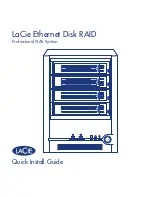
SNMP protocol
U
SER
G
UIDE
290
set snmp trap-source 172.20.1.1
or
set snmp trap-source loopback
The configuration above establishes that standard traps are sent to the manager with address
10.1.10.25
on port
162
(default for SNMP traps) with the community
publictrap
.
In order to activate traps on attempts of unauthorized access, the following sequence of commands
can be used:
set snmp authtrap
set snmp on
In order to activate traps on ISDN calls, the following sequence of commands can be used:
set snmp trap-isdn
set snmp on
In order to configure control parameters on the generation and transmission of traps, the following
sequence of commands is used:
set snmp trap-poll-frequency <value>
set snmp trap-retries <value>
set snmp trap-timeout <value>
set snmp on
For example the sequence of commands:
set snmp trap-poll-frequency 30
set snmp trap-retries 5
set snmp trap-timeout 10
set snmp on
establishes that the status of the interfaces is checked every 30 seconds and establishes that when
the manager do not reply, 5 retries at intervals of 10 seconds are executed.
The default values are:
trap-poll-frequency 20
trap-retries 3
trap-timeout 5
In order to disable the community and the transmission of traps the following commands are used:
set snmp no-authtrap
set snmp no-community <value> access ro|rw
set snmp no-trapcommunity <value>
set snmp no-traphost <ipaddr>
set snmp no-trap-isdn
S
NMP V
3
CONFIGURATION
If properly configured, SNMP agent can reply to SNMPv3 requests. The SNMPv3 specifications are
about security and encryption aspects.
















































